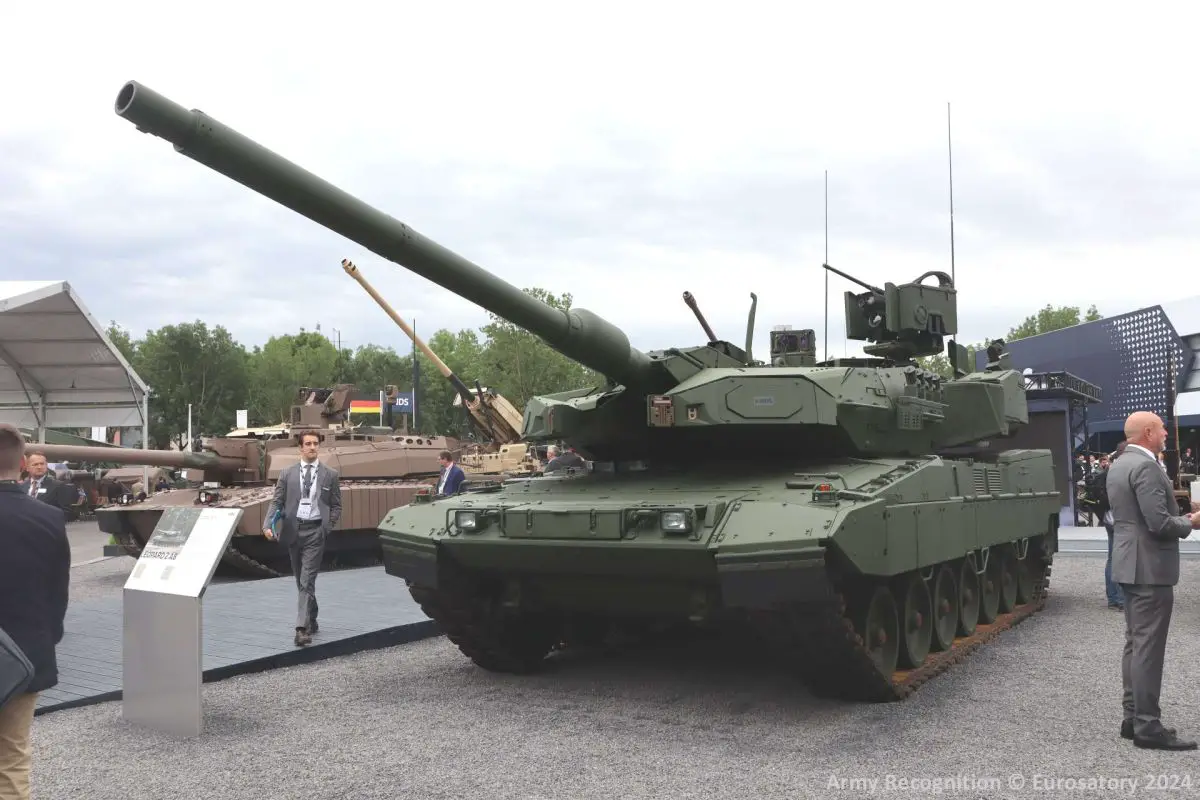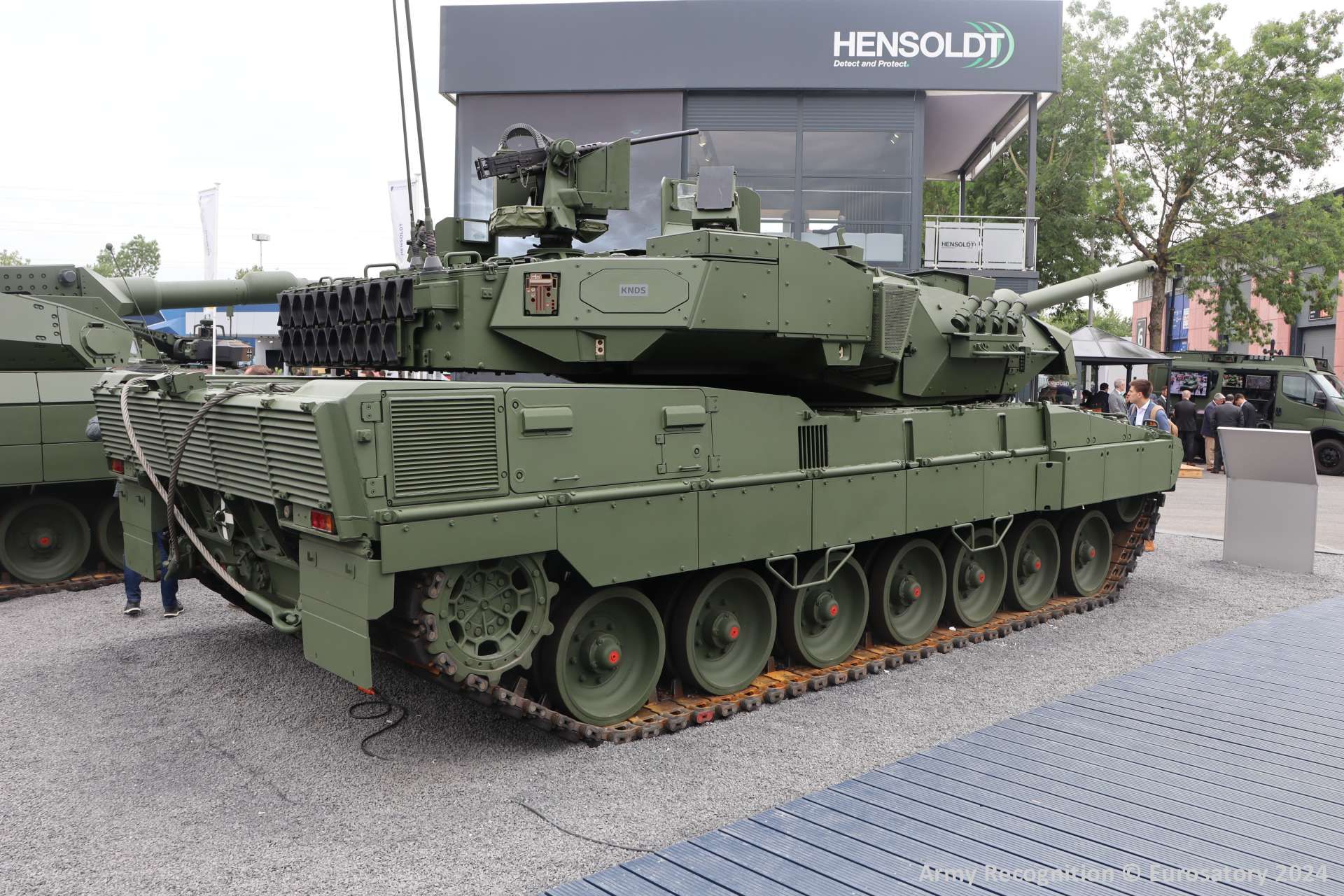Breaking News
German Army to receive 105 new Leopard 2A8 tanks for combat brigade in Lithuania.
According to Der Spiegel on June 20, 2024, German Defense Minister Boris Pistorius plans to acquire 105 new Leopard 2A8 battle tanks from the company KNDS for 2.93 billion euros, with delivery expected by 2030. This plan is outlined in a confidential document intended for the Bundestag's budget committee, which must approve such major projects and will review the tank deal before the summer recess.
Follow Army Recognition on Google News at this link

The acquisition will significantly increase the Bundeswehr's inventory, which currently includes around 310 Leopard tanks of various models, as the addition of 105 tanks will expand this inventory by approximately one-third (Picture source: Army Recognition)
The purpose of this large order is to ensure the planned German combat brigade in Lithuania has sufficient battle tanks. The documents describe the brigade as "one of the first elements of forward defense in the NATO alliance," stressing the importance of "best possible and uniform equipment." Additionally, these tanks will aid in modernizing Germany's armored troops, a priority for the Bundeswehr.
This order is possible due to a framework agreement established last year between the German army and KNDS for the delivery of 123 Leopard 2A8 tanks. Initially, 18 tanks were ordered to replace those transferred to Ukraine. At that time, the army indicated the need for additional tanks to modernize its units, estimating a requirement of at least 50 new tanks. The current plan includes 35 tanks for Lithuania by 2028, with the remaining 70 by 2030.
The acquisition will significantly increase the Bundeswehr's inventory, which currently includes around 310 Leopard tanks of various models. The addition of 105 tanks will expand this inventory by approximately one-third. The budget for operating these systems over ten years from 2030 is projected to be 750 million euros, a cost not included in the current package. The documents also highlight the risk that KNDS may face delays in delivery due to global shortages of electronic components and raw materials, classifying this risk as "medium to high."
The budget committee is expected to closely examine the financing model for this procurement. The finance ministry has indicated that the costs for these tanks will not be covered by the 100 billion euro special fund or the defense ministry's annual budgets from 2025 onwards. Instead, a commitment authorization will be issued, ensuring that the federal government will cover the costs, allowing the order to proceed.
This financing model sets a precedent for future governments. The initial costs in the upcoming years are manageable, but from 2027 onwards, the financial burden will increase significantly. The projected costs are 430 million euros in 2027, 710 million in 2028, 909 million in 2029, and 842 million in 2030. The defense department will require a substantial increase in its budget to cover these expenses, though no such increase is currently planned beyond the annual figure of approximately 50 billion euros.

The passive armor kit and APS of the Leopard 2A8 provide protection against anti-tank guided weapons and rocket-propelled grenades, ensuring 360° coverage. (Picture source: Army Recognition)
The Leopard 2A8 Main Battle Tank (MBT) was unveiled as a prototype in May 2023 at the International Defence and Security Technologies Fair (IDET) in Brno, Czech Republic. Developed by German companies Krauss-Maffei Wegmann (KMW) and Rheinmetall, it is the latest variant in the Leopard 2 series, based on the Leopard 2A7+ with updates in armor and firepower. It includes an advanced armor protection system with multi-layered armor made of steel, tungsten, composite filler, and ceramic components. Additionally, it is equipped with the EuroTrophy Active Protection System (APS), offering 360-degree radar coverage and intercepting incoming projectiles.
The demonstrator vehicle displayed at Eurosatory 2024 features a turret with an active protection system, an improved PERI with a laser rangefinder, and a 360° local situational awareness system combined with a laser warning system. This vehicle has been used for testing various components and configurations to evaluate performance and functionality.
The primary armament of the Leopard 2A8 is an improved 120 mm/L55 A1 smoothbore gun, an enhancement over the L44 gun, allowing for higher muzzle velocities and improved accuracy, range, and penetration. It can fire various munitions, including the DM11 programmable ammunition, which can detonate at specific points in its trajectory, targeting lightly armored vehicles, infantry, and fortifications. Secondary armaments include a coaxial 7.62 mm machine gun and a multi-purpose 76 mm grenade launcher.
The design of the Leopard 2A8 includes a four-man crew of driver, gunner, loader, and commander. It has enhanced armor on the turret and hull, particularly in areas such as the turret roof and underbelly, with added mine protection. The passive armor kit and APS provide protection against anti-tank guided weapons and rocket-propelled grenades, ensuring 360° coverage.
The Leopard 2A8 is powered by a 1,500 hp engine, enabling speeds up to 65 km/h and an operational range of approximately 400 kilometers. Its torsion bar suspension system, 500 mm ground clearance, and durable tracks allow it to navigate difficult terrains, including steep gradients and water obstacles. According to KNDS, the Leopard 2A8 weighs less than 69 tons and measures 8.05 meters in length (11.17 meters with the gun), 4.00 meters in width, and 2.72 meters in height at the turret roof (3.11 meters with PERI).
The Leopard 2A8 includes advanced optics and fire control systems, such as third-generation thermal imaging for the commander and gunner, and a fire control system that enhances targeting accuracy. This system comprises a laser rangefinder and ballistic computer, allowing precise engagement of moving targets. Additionally, the tank features a crew compartment cooling unit with a capacity of up to 10 kW, an auxiliary power unit (APU) with a 20 kW output stabilized by ultracapacitors, an NBC overpressurization system, and a comprehensive fire protection system, ensuring operational functionality and crew safety. The running gear is reinforced, the cooling unit for the power pack is improved, and the ergonomics and slew-to functions are enhanced. Optional features include a remote-controlled weapon station (RCWS) and a laser warning system.


























